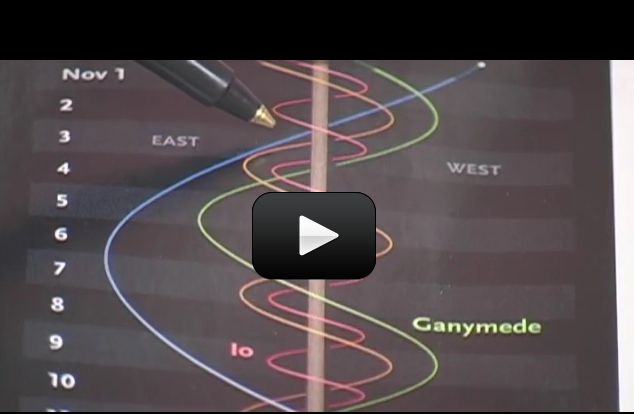On a clear night when Jupiter is up, you’ll be able to view the four moons of Jupiter (Europa, Ganymede, Io, and Callisto) and the largest moon of Saturn (Titan) with only a pair of binoculars. The question is: Which moon is which? This lab will let you in on the secret to figuring it out.
You get to learn how to locate a planet in the sky with a pair of binoculars, and also be able to tell which moon is which in the view.
Materials
- Printout of corkscrew graph
- Pencil
- Binoculars (optional)


I wasn’t sure where to put my question for Jupiter, so I hope this fits accordingly. When generally speaking, should I call Jupiter a planet or a brown dwarf? I know it needs more mass to become a star, but it’s not quite as dense as a normal brown dwarf. I’m kind of confused!
No – not through binoculars or small telescope. Jupiter will look about the same through these instruments.
Does it depend which way you’re looking at Jupiter? I mean, like from the front or back?
You’ll need to get the most recent month and year graph. This video is to show you how to read the graphs. You’ll find these types of graphs published in astronomy magazines, like Astronomy or Sky and Telescope.
Does this graph still work since its 2015?
This is so Interesting…Especially with the new news about Ganymede. Personally i think that there is life under the crust. I mean earth started out a similar way right?
You know, I am not sure as it was taken a few years ago, but you will be able to tell which moon is which from the chart. Is there a particular question you had that I can answer about the image?
what day was the actual picture (from the video) taken?